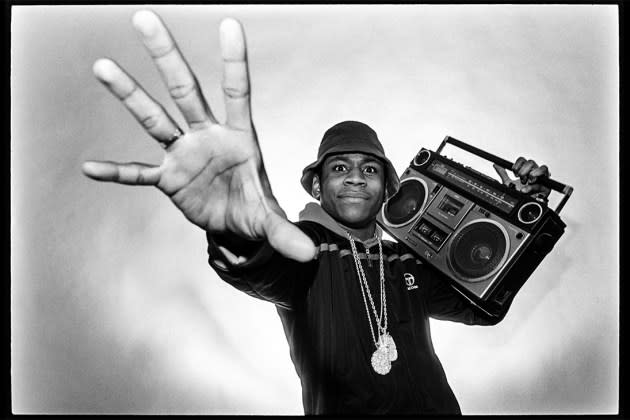‘Uncropped’ Review: James Hamilton Doc Doubles as a Compelling Elegy for Photojournalism and Alt-Weeklies

Even if you don’t know James Hamilton’s name, you probably recognize some of his images. Over a career that has spanned seven decades and seen his work published in Harper’s Bazaar, The New York Observer, New York Magazine and The Village Voice, Hamilton has photographed music and film superstars, legendary directors, notorious criminals and powerful politicians, as well as wars, famines and revolutions.
Hamilton is also humble to a fault, making him a perfect focal subject for D.W. Young’s new documentary Uncropped. Ostensibly a biography of and tribute to Hamilton’s life and work, Uncropped is most interesting when it uses its subject as a bit of a Trojan horse. Yes, Uncropped achieves its goal of raising Hamilton’s profile and celebrating the genius within his work. But that’s probably only the level on which it’s third or fourth most successful — behind serving as an elegy for the lamentably defunct alt-weekly marketplace and offering a more wide-ranging glimpse into the lost art of photojournalism in an age of iPhone snapshots.
More from The Hollywood Reporter
So if Uncropped occasionally meanders — sometimes into stories debatably more deserving of 111-minute treatment than the casually, thoughtfully rumpled Hamilton — it’s easy to think that Hamilton would modestly agree, or at least acknowledge that he’s somewhat a pivot-point here. Somebody flashier — “flash” pun intended, since Hamilton’s use of photographic flash is one of many topics in discussion — might have resisted being used as a vehicle to tap into myriad other topics; with Hamilton it comes comfortably, making him all the easier to admire by the time the closing credits roll.
For maybe a half-hour, Uncropped feels like it’s going to be a glorified slide show. Hamilton talks about his first experiences with a camera, the cross-country hitchhiking trip that cemented his love with the lens and his early days at the rock magazine petri dish that was Crawdaddy. The pictures are great, the anecdotes are fine and the general energy level is low.
As his career intersects with the transitional cultural scene that was New York City in the 1970s, Uncropped begins to pick up steam. As it hits Hamilton’s Village Voice years, the documentary is locked into a story that’s more fascinating than a mere biography, or at least the biography of one man.
Uncropped becomes the biography of a bygone journalistic moment. You can mourn the access that was central to so much of Hamilton’s finest portraiture. He was able to spend full afternoons just hanging out with subjects like Alfred Hitchcock without a publicist in sight. He would go to parties where the attending celebrities weren’t constantly posing for selfies and, thus, where actual candid images were possible. He was able to shoot his own pictures, develop his own pictures, insist that those pictures go to print without outside editing and, when it was finished, he would own the negatives. It points to Hamilton’s generally even-keeled attitude that he paints these generational discrepancies in broad strokes without irritation or incredulity. In fact, you have to wait until Hamilton talks about Jared Kushner’s acquisition of The New York Observer to see him get fiery about anything.
The celebration of The Village Voice is easily the documentary’s best chapter, as an assortment of Voice luminaries — Mark Jacobson! Thulani Davis! Michael Daly! Joe Conason! — share memories, sometimes solo and sometimes sitting with Hamilton, sometimes situating Hamilton at the center of the stories and sometimes not. If you’re interested in photojournalism, the conversations between Hamilton and Sylvia Plachy, his fellow Voice shutterbug (and Adrien Brody’s mom), are absolute gold. They banter about composition and spontaneity, comparing and contrasting their respective styles, each with boundless admiration for the other.
These scenes and Young’s willingness to stage interviews in pairs and trios should serve as a clear reminder to other documentary filmmakers that if your subjects are famed collaborators, any solo interview is a missed opportunity. The warmth that comes from Jacobson and Hamilton flashing back to the months they spent driving across the country picking up random stories for the Voice on their journey — yet another 2023 implausibility— could never be simulated by editing together separate chats.
The Village Voice material boosts everything around it, as Young brings out an amusing assortment of friends and partners to talk about how subsequently eclectic Hamilton’s career has been. Wes Anderson, also an executive producer on the documentary, is unusually animated recounting how he recruited Hamilton to be his regular on-set photographer. Thurston Moore of Sonic Youth, and wife Eva Prinz, sit with Hamilton for what feels like a charming cup of afternoon coffee. And Hamilton loosens up as well, with poignant stories about his friendship with Bill Paxton and the accident that effectively ended his journalistic career.
By the end, I’d mostly shaken my feeling that Young would have been better off doing a documentary about alt-weeklies in which Hamilton was a featured participant, rather than the other way around. It’s enough to understand the fertile environments that publications like the Voice or Los Angeles Weekly became, the talented people who were nurtured there, and what we’ve lost in having those papers either shuttered entirely or devalued beyond recognition.
And man, James Hamilton’s pictures are tremendous, and a serious-minded look at an artistry that’s rarely afforded this kind of spotlight is a valuable thing.
Best of The Hollywood Reporter

 Yahoo News
Yahoo News 